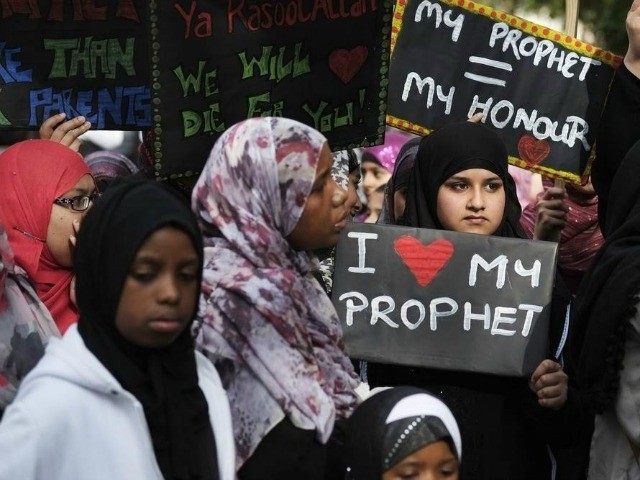From Ibn Warraq writing at City Journal:
On the northeast corner of Madison Avenue and 25th Street stands the Manhattan Appellate Courthouse, a Corinthian-columned marble palace built in 1900 by architect James Brown Lord. Gracing the roof balustrade are nine statues of historical lawgivers, including Solon, Justinian, Confucius, and Moses. Originally, the design honored ten men, the tenth being Mohammed, in an eight-foot marble statue by Charles Albert Lopez. The New York Times described the statue as “of average height, but broad-shouldered, with thick, powerful hands. Under his turban, his brows are prominent and frowning. A long, heavy beard flows over his robe. In his left hand, he holds a book, symbolizing the new religion he founded”—a blunder by Lopez; no devout Muslim, let alone Mohammed himself, would touch the Koran with a hand reserved for dirty chores—“and in his right, a scimitar, connoting the Moslem conquest.”
In 1955, as a renovation to the courthouse was under way, the Mohammed statue came to the notice of the Egyptian, Indonesian, and Pakistani ambassadors to the United Nations. As Daniel Pipes recounted the episode in a 2008 Jerusalem Post article, they immediately demanded that the U.S. State Department use its influence to get the statue removed—despite its obvious intent to honor the Muslim lawgiver—on the grounds that Islam forbids artistic representation of the Prophet. The State Department complied. New York City’s public works commissioner, Frederick Zurmuhlen, filled in the vacant spot on the balustrade by shifting around the remaining nine statues.
Over half a century later, Muslim demands related to the visual representation of Mohammed have become familiar—and today, they are usually accompanied by threats of violence. In 2005, the Danish newspaper Jyllands-Posten published 12 cartoons depicting Mohammed, sparking violent riots and threats and prompting most other Western papers to refuse to run the cartoons. Last year, Yale University Press published a book on that controversy but refused to print the cartoons themselves. More recently, in response to apparent threats against the creators of the TV show South Park, the cable network Comedy Central censored an episode that mocked Mohammed.
Read the rest of the story at City Journal.

COMMENTS
Please let us know if you're having issues with commenting.